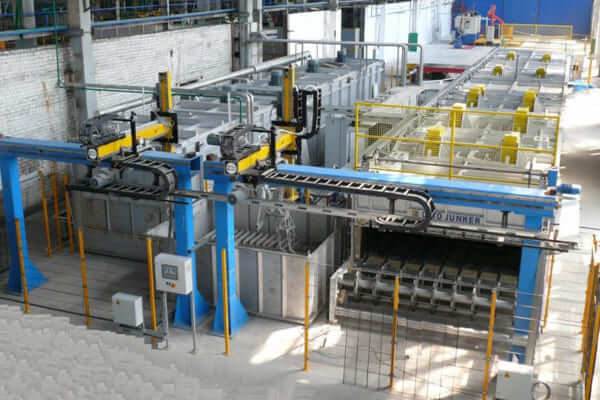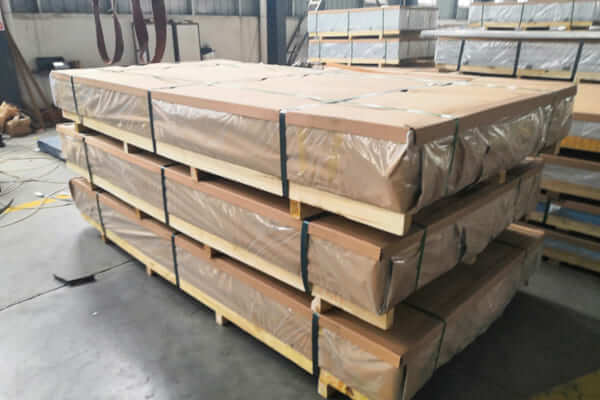In addition to some common characteristics of aluminum alloys, such as high strength-to-weight ratio and strong corrosion resistance, the performance of different alloys is quite different, and heat treatment is also a tool to adjust its performance.
Heat treatment refers to controlling the temperature of part or all of the alloy and the time at a certain temperature, thereby changing its microstructure and changing the properties of the alloy.
Heat Treatment of Steel – Heating the metal to very high temperatures.
But aluminum has a much lower melting point and a higher thermal conductivity, which can significantly affect how it heats up.

Heat treat of aluminum alloy
Some specific alloys can be heat treated, not all aluminum alloys can be heat treated;
Generally speaking, heat treatment can improve the performance parameters of aluminum alloys, such as:
Alloys that can be strengthened by heat treatment are called heat treatable alloys, such as:
The factor that determines whether the alloy can be heat treated is the chemical composition of the alloy. Some chemical elements show higher solubility in aluminum at high temperature, and the atoms can be redistributed in the alloy to make the distribution more uniform and improve the performance of the alloy.
However our most common heat treatable alloy is 6061 alloy.
There are four commonly used heat treatment methods for aluminum alloys;
Annealing is a process used to counteract some of the effects of cold working (without heating the aluminum). When a material is cold worked, it creates internal stresses that increase its strength and hardness. However, this comes at the expense of some ductility and formability, an effect called work hardening.
Work hardening is necessary to increase the strength of the product. However, if the product is subsequently subjected to further molding processing, the decrease in formability may lead to processing failure of the product.
Annealing also relieves internal stresses in cast aluminum parts to prevent future cracks. The process involves heating the alloy to a specific temperature, holding it for a certain amount of time, and then slowly cooling it back to room temperature.
Solution heat treatment involves a heating process similar to annealing, but instead of gradually cooling to room temperature, the product is quenched. Quenching is usually done in water and essentially “freezes” the microstructure before the atoms redistribute.
After quenching, aluminum is capable of age hardening. Quenching also provides a window that allows you to proceed with further forming processes.
Solution heat treatment maximizes the concentration of hardening alloying elements in solid solution so that they do not precipitate out before aging occurs.
The ideal temperature to achieve this solubility is only a few degrees below the melting temperature of the alloy. Due to the very narrow temperature window, very precise furnaces must be used to achieve and maintain the required conditions.
When a product is solution heat treated, aging is a natural or artificial process. The aging process gradually increases the strength and hardness of the alloy to a higher level than the initial level.
Once the aging process begins, the microstructure of the alloy gradually fixes as solid solution elements begin to precipitate and lock into their final positions.
Natural aging means that most of the hardening occurs within 24 hours of being treated, and it may take four to five days for full effect to take place. However, some alloys cannot achieve maximum strength through natural aging because their solid solution components cannot be completely precipitated.
These alloys require further heating to achieve complete precipitation, a process called artificial aging, also known as precipitation hardening. The alloy is heated at a specific temperature and held for 6 to 24 hours, then cooled to room temperature. The result is an alloy with increased strength and hardness but reduced ductility.
The main goal of the final heat treatment process (homogenization) is to redistribute the internal alloying elements in order to achieve uniformity in the chemical composition of the product. This is very important for castings, which solidify at different rates throughout their thickness, starting at the edge of the mold.
In this process, elements with lower melting points, such as pure aluminum, solidify first at the outer edges, while elements with higher melting points migrate and concentrate toward the center of the casting wall.
If nothing is done, some areas of the product may be too soft, while other areas may be too hard and brittle, making failure more likely. To homogenize the aluminum alloy, the part is heated to a temperature just below its melting point and then cooled slowly.
The difference between homogenization and annealing is that homogenization is done at a higher temperature. Annealing only recrystallizes through grain boundary migration, while homogenization also allows the migration of alloying elements to achieve uniformity of chemical composition throughout the product.

Aluminum alloy warehouse
When searching for aluminum alloys, the temper condition is generally included, and some temper designations are marked according to the specific heat treatment mentioned earlier. That is, the designations “O”, “W” and “T” respectively disclose whether the alloy has been annealed, solution heat treated or aged.
O = annealed
W = solution heat treated
T = old age
Their meanings are different, but a specific tempering treatment usually requires a specific heat treatment process;
When you are ready to order or use an aluminum alloy, it is best to remember its tempering name and the effect of tempering on the properties of the alloy.
When purchasing aluminum alloy, not only to determine the alloy type, the alloy type can determine the performance of the alloy is good, but different tempering states have a relatively large impact on performance;
Let me give you an example to illustrate a problem. When purchasing the tempered state of alloy A and B, it is found that the tempered state of alloy C and D can also meet all the physical and chemical performance requirements. can be improved to a greater extent.
The suitability of heat treatment for your product will depend on its end application and the manufacturing process you choose. Since heat treatment incurs additional tooling costs, you should carefully evaluate whether it is necessary in your situation.
5005 aluminum coil refers to the 5005 aluminum plate after being cast and rolled and then processed into a coil shape by drawing and bending,
8021 aluminium foil is a common alloy in 8000 series aluminum alloys. Common aluminum foils in 8000 series aluminum alloys include 8011 Aluminum Foil and 8079.
5454 aluminum circles have all the properties of 5454 aluminum alloy and are often used in can sealing, non-stick pot bottoms, traffic signs, lampshades, etc.
Upgrade your roof with high-quality aluminum roofing sheets. Experience long-lasting protection and enhance your home's aesthetics with our stylish and durable roofing solution
3A21 aluminum plate is an Al-Mn series aluminum alloy, which belongs to the weldable LF21 aluminum alloy and is known for its excellent anti-rust properties.
Welcome to Huawei Aluminum, your trusted source for high-quality aluminum coils designed specifically for aluminium roofing sheets.
No.52, Dongming Road, Zhengzhou, Henan, China
Henan Huawei Aluminum Co., Ltd, One Of The Biggest Aluminum Supplier In China Henan,We Are Established In 2001,And We Have rich experience in import and export and high quality aluminum products
Mon – Sat, 8AM – 5PM
Sunday: Closed
© Copyright © 2023 Henan Huawei Aluminium Co., Ltd
Latest Comments
Dear Sir, Please offer your best FOB Prices specs are as under ALUMINIUM STRIP (AL=99.50% MIN) SIZE:450 X32 X6 MM. DIN EN 570 EN-AW 1050 A, QUANTITY=3400KG
Hello, Would you be so kind to offer item as follows: Coil 0,6х1250 (1000)mm EN AW-3105 5tons
Hello, Can you offer me Aluminium plates? Actally I need: 110mm x 1700mm x 1700mm 5083 H111 - 21 pcs Next year planed is 177 pcs
Świetny artykuł. Byłem zachwycony, że wyszukałem ten artykuł. Wielu osobom wydaje się, że mają rzetelną wiedzę na ten temat, ale często tak nie jest. Stąd też moje miłe zaskoczenie. Jestem pod wrażeniem. Zdecydowanie będę rekomendował to miejsce i częściej wpadał, aby zobaczyć nowe rzeczy.
requirement of aluminium strip